Chandrayaan-3 lands on the moon
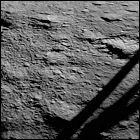 Launched by ISRO (Indian Space Research Organisation) in July, the Chandrayaan-3 uncrewed lunar lander successfully touches down on the surface of the moon near the lunar south pole, the first human-made spacecraft to successfully land in that region. Pictures from the surface are transmitted back to Earth, though the lander’s mission is to look for signs of subsurface water believed to be common in the shaded south pole region, a potentially vital resource for long-term human habitation of the moon. (This was the mission intended for the earlier, unsuccessful Chandrayaan-2 mission in 2018.) In accomplishing this feat, India becomes the fourth country to soft-land a payload on the lunar surface.
Launched by ISRO (Indian Space Research Organisation) in July, the Chandrayaan-3 uncrewed lunar lander successfully touches down on the surface of the moon near the lunar south pole, the first human-made spacecraft to successfully land in that region. Pictures from the surface are transmitted back to Earth, though the lander’s mission is to look for signs of subsurface water believed to be common in the shaded south pole region, a potentially vital resource for long-term human habitation of the moon. (This was the mission intended for the earlier, unsuccessful Chandrayaan-2 mission in 2018.) In accomplishing this feat, India becomes the fourth country to soft-land a payload on the lunar surface.
Luna 25 mission ends
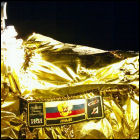 Russia’s Luna 25 mission to the lunar south pole ends unsuccessfully when an engine burn intended to lower the vehicle’s orbit around the moon into its final landing orbit goes awry. Luna 25 instead crashes into the moon as the result of the engine firing longer than expected. Contact with Luna 25 is not recovered following what the Russian space agency describes as an “abnormal situation”. The mission was Russia’s first attempt at a lunar landing in nearly 50 years.
Russia’s Luna 25 mission to the lunar south pole ends unsuccessfully when an engine burn intended to lower the vehicle’s orbit around the moon into its final landing orbit goes awry. Luna 25 instead crashes into the moon as the result of the engine firing longer than expected. Contact with Luna 25 is not recovered following what the Russian space agency describes as an “abnormal situation”. The mission was Russia’s first attempt at a lunar landing in nearly 50 years.
Luna 25
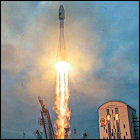 Russia launches the Luna 25 uncrewed spacecraft on a mission to land near the south pole of the moon. This is the first mission in the Luna program, which has been dormant since the 1970s; if successful, the mission will be the first Russian soft-landing on the moon in almost 50 years. Much like India’s Chanrayaan-3 mission, launched a few weeks earlier, Luna 25 is intended to search for signs of water in the shaded areas of the lunar south pole, which could be a necessary resource for future crewed missions and possible long-term habitation of the moon.
Russia launches the Luna 25 uncrewed spacecraft on a mission to land near the south pole of the moon. This is the first mission in the Luna program, which has been dormant since the 1970s; if successful, the mission will be the first Russian soft-landing on the moon in almost 50 years. Much like India’s Chanrayaan-3 mission, launched a few weeks earlier, Luna 25 is intended to search for signs of water in the shaded areas of the lunar south pole, which could be a necessary resource for future crewed missions and possible long-term habitation of the moon.
Chandrayaan-3
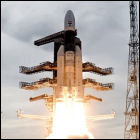 India launches the Chandrayaan-3 uncrewed lunar lander mission, expected to reach the moon in August after weeks of gradually increasing the vehicle’s orbital altitude until it slips from Earth orbit into lunar orbit. The mission profile is very similar to that of the Chandrayaan-2 mission, which attempted to put a lunar lander named Vikram on the surface near the lunar south pole to look for signs of water.
India launches the Chandrayaan-3 uncrewed lunar lander mission, expected to reach the moon in August after weeks of gradually increasing the vehicle’s orbital altitude until it slips from Earth orbit into lunar orbit. The mission profile is very similar to that of the Chandrayaan-2 mission, which attempted to put a lunar lander named Vikram on the surface near the lunar south pole to look for signs of water.
India’s Vikram lunar lander falls silent
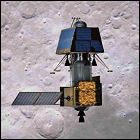 India’s mission to safely put a lander and an autonomous rover on the surface of the moon ends with a sudden loss of data. Deployed by the successful Chandrayaan-2 orbiter, the Vikram lander (carrying the Pragyan rover) begins a powered descent to the lunar surface, only to cease communicating with ground controllers in India at an altitude of 2.1 kilometers. With the speed of Vikram’s descent at the time of data loss measured at 60 meters per second via telemetry, ground controllers declare it likely that Vikram crashed into the moon, resulting in the loss of the vehicle and its payload, a fate somewhat similar to that of the Israel-launched Beresheet lander earlier in the year. The orbiter continues to function, and will search for signs of water ice at the south pole of the moon.
India’s mission to safely put a lander and an autonomous rover on the surface of the moon ends with a sudden loss of data. Deployed by the successful Chandrayaan-2 orbiter, the Vikram lander (carrying the Pragyan rover) begins a powered descent to the lunar surface, only to cease communicating with ground controllers in India at an altitude of 2.1 kilometers. With the speed of Vikram’s descent at the time of data loss measured at 60 meters per second via telemetry, ground controllers declare it likely that Vikram crashed into the moon, resulting in the loss of the vehicle and its payload, a fate somewhat similar to that of the Israel-launched Beresheet lander earlier in the year. The orbiter continues to function, and will search for signs of water ice at the south pole of the moon.
Chandrayaan-2 mission launched
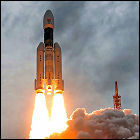 ISRO, India’s space agency, launches the Chandrayaan-2 mission to Earth’s moon, consisting of an orbiter and the Vikram/Prgyan lander/rover combination. The robotic vehicles are intended to conduct measurements, both from orbit and on the surface, of possible water ice deposits believed to exist at the lunar south pole. Much like the Beresheet mission launched by Israel earlier in the year, Chandrayaan-2 will employ a series of orbit-raising maneuvers until its apogee is high enough to propel it into lunar orbit with minimum reliance on burning fuel. The landing is expected to take place in September 2019.
ISRO, India’s space agency, launches the Chandrayaan-2 mission to Earth’s moon, consisting of an orbiter and the Vikram/Prgyan lander/rover combination. The robotic vehicles are intended to conduct measurements, both from orbit and on the surface, of possible water ice deposits believed to exist at the lunar south pole. Much like the Beresheet mission launched by Israel earlier in the year, Chandrayaan-2 will employ a series of orbit-raising maneuvers until its apogee is high enough to propel it into lunar orbit with minimum reliance on burning fuel. The landing is expected to take place in September 2019.
Beresheet attempts to land on the moon
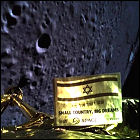 The Israeli-built Beresheet uncrewed experimental lunar lander, during its attempt to land on the moon, loses engine power during descent and plummets toward the lunar surface. Though the main engine is believed to have restarted during that descent, the vehicle is too low to make a survivable landing and crashes on the moon. The Google Lunar X Prize committee awards $1,000,000 to SpaceIL, the Israeli space exploration organization founded specifically to launch the Beresheet mission, and the mission’s backers vow to use the prize to build a second Beresheet lander to attempt to complete the original vehicle’s mission.
The Israeli-built Beresheet uncrewed experimental lunar lander, during its attempt to land on the moon, loses engine power during descent and plummets toward the lunar surface. Though the main engine is believed to have restarted during that descent, the vehicle is too low to make a survivable landing and crashes on the moon. The Google Lunar X Prize committee awards $1,000,000 to SpaceIL, the Israeli space exploration organization founded specifically to launch the Beresheet mission, and the mission’s backers vow to use the prize to build a second Beresheet lander to attempt to complete the original vehicle’s mission.
Beresheet launched
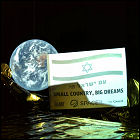 The Israeli-built Beresheet uncrewed experimental lunar lander is launched from Cape Canaveral aboard a SpaceX Falcon 9 rocket. Originally intended as an entrant for the Google Lunar X Prize, Beresheet (and all the other hopefuls) missed the March 31, 2018 deadline, leaving the $20,000,000 Lunar X Prize unclaimed. Unlike past lunar missions, Beresheet is launched into a high Earth orbit, whose apogee (maximum distance from Earth) will be increased over a period of nearly two months with multiple burns of the vehicle’s main engine until it coincides with the orbital distance of the moon, at which time the engine will be fired again to place it in a lunar orbit prior to landing. The lander contains digital copies of numerous documents from Earth, reflecting the builders’ Jewish heritage as well as extensive databases of knowledge from sources such as Wikipedia. As the lander itself has not been built with protective shielding of any kind, its operational lifetime is expected to last only around two days on the lunar surface. If the mission succeeds, Israel will be the fourth nation (after the United States, Soviet-era Russia, and China) to land a spacecraft on the moon.
The Israeli-built Beresheet uncrewed experimental lunar lander is launched from Cape Canaveral aboard a SpaceX Falcon 9 rocket. Originally intended as an entrant for the Google Lunar X Prize, Beresheet (and all the other hopefuls) missed the March 31, 2018 deadline, leaving the $20,000,000 Lunar X Prize unclaimed. Unlike past lunar missions, Beresheet is launched into a high Earth orbit, whose apogee (maximum distance from Earth) will be increased over a period of nearly two months with multiple burns of the vehicle’s main engine until it coincides with the orbital distance of the moon, at which time the engine will be fired again to place it in a lunar orbit prior to landing. The lander contains digital copies of numerous documents from Earth, reflecting the builders’ Jewish heritage as well as extensive databases of knowledge from sources such as Wikipedia. As the lander itself has not been built with protective shielding of any kind, its operational lifetime is expected to last only around two days on the lunar surface. If the mission succeeds, Israel will be the fourth nation (after the United States, Soviet-era Russia, and China) to land a spacecraft on the moon.
SpaceX shoots for the moon
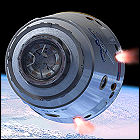 Private aerospace company SpaceX announces that a crew of two – not publicly identified by the company – have booked a private circumlunar flight scheduled to take place in 2018 aboard a SpaceX Dragon v2 capsule. The flight will utilize a free-return trajectory to the moon, around its dark side, and back to Earth, without orbiting or landing. At the time of the announcement, Dragon v2 has yet to fly into space, either with or without a crew, and the booster that would be required for this flight, the Falcon Heavy, has yet to be test-flown, either with or without a crew.
Private aerospace company SpaceX announces that a crew of two – not publicly identified by the company – have booked a private circumlunar flight scheduled to take place in 2018 aboard a SpaceX Dragon v2 capsule. The flight will utilize a free-return trajectory to the moon, around its dark side, and back to Earth, without orbiting or landing. At the time of the announcement, Dragon v2 has yet to fly into space, either with or without a crew, and the booster that would be required for this flight, the Falcon Heavy, has yet to be test-flown, either with or without a crew.
Chang’e 3: China’s lunar lander
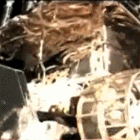 China successfully lands the unmanned lunar lander Chang’e 3 on the surface of the moon, only the third country on Earth to achieve a controlled lunar landing (and the first soft landing of a man-made space vehicle on the moon since the 1970s). With Chang’e 3 confirming that its solar panels have properly deployed, preparations are made to deploy its robotic lunar rover, Yutu, the first lunar rover since 1973, breaking a four-decade drought in exploring the surface of the moon.
China successfully lands the unmanned lunar lander Chang’e 3 on the surface of the moon, only the third country on Earth to achieve a controlled lunar landing (and the first soft landing of a man-made space vehicle on the moon since the 1970s). With Chang’e 3 confirming that its solar panels have properly deployed, preparations are made to deploy its robotic lunar rover, Yutu, the first lunar rover since 1973, breaking a four-decade drought in exploring the surface of the moon.
Farewell, Kaguya
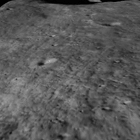 Japan’s unmanned Kaguya spacecraft, also known as SELENE, is intentionally crashed into the surface of Earth’s moon, which it has been orbiting and studying for nearly two years (twice its intended one-year operational lifetime). Having completed its observations and studies (as well as transmitting back to Earth high-definition camera views of the moon from orbit), Kaguya impacts near the crater Gill.
Japan’s unmanned Kaguya spacecraft, also known as SELENE, is intentionally crashed into the surface of Earth’s moon, which it has been orbiting and studying for nearly two years (twice its intended one-year operational lifetime). Having completed its observations and studies (as well as transmitting back to Earth high-definition camera views of the moon from orbit), Kaguya impacts near the crater Gill.
Kaguya at the Moon
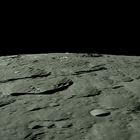 Japan’s unmanned Kaguya spacecraft, also known as SELENE, enters a polar orbit around Earth’s moon with an average altitude of 62 miles. Billed by Japanese space agency JAXA as the most significant lunar mission since the Apollo era, Kaguya carries numerous science experiments, though the public is most captivated by video transmitted back to Earth from two on-board HDTV cameras supplied by television network NHK. Kaguya conducts accurate gravitational mapping of the far side of the moon for the first time, and its own terrain camera obtains high-resolution mapping data, which will later be shared with Google for an online 3-D map of the moon.
Japan’s unmanned Kaguya spacecraft, also known as SELENE, enters a polar orbit around Earth’s moon with an average altitude of 62 miles. Billed by Japanese space agency JAXA as the most significant lunar mission since the Apollo era, Kaguya carries numerous science experiments, though the public is most captivated by video transmitted back to Earth from two on-board HDTV cameras supplied by television network NHK. Kaguya conducts accurate gravitational mapping of the far side of the moon for the first time, and its own terrain camera obtains high-resolution mapping data, which will later be shared with Google for an online 3-D map of the moon.
Kaguya lifts off
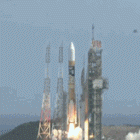 The Japanese space agency, JAXA, launches the unmanned SELENE (Selenological and Engineering Explorer) spacecraft to orbit Earth’s moon. SELENE is nicknamed Kaguya after a princess of the moon from Japanese folklore. Kaguya is scheduled to enter a polar lunar orbit in October, where it will conduct experiments in spectography, radio science, and charged particle and gamma ray detection. Though Kaguya has an on-board camera to map lunar terrain, the views for which it will become most famous will be shot by two HDTV cameras supplied by Japanese television network NHK, providing spectacular views of the lunar surface as they would be seen by an orbiting explorer.
The Japanese space agency, JAXA, launches the unmanned SELENE (Selenological and Engineering Explorer) spacecraft to orbit Earth’s moon. SELENE is nicknamed Kaguya after a princess of the moon from Japanese folklore. Kaguya is scheduled to enter a polar lunar orbit in October, where it will conduct experiments in spectography, radio science, and charged particle and gamma ray detection. Though Kaguya has an on-board camera to map lunar terrain, the views for which it will become most famous will be shot by two HDTV cameras supplied by Japanese television network NHK, providing spectacular views of the lunar surface as they would be seen by an orbiting explorer.
We Have Capture: Tom Stafford and the Space Race
 Smithsonian Books publishes General Thomas Stafford’s non-fictional memoir of his time in NASA, “We Have Capture: Tom Stafford and the Space Race“, co-written with Michael Cassutt. The book details Stafford’s involvement in several NASA missions, from the Gemini program through the high-profile flights of Apollo 10 to the moon and the international Apollo-Soyuz Test Project mission.
Smithsonian Books publishes General Thomas Stafford’s non-fictional memoir of his time in NASA, “We Have Capture: Tom Stafford and the Space Race“, co-written with Michael Cassutt. The book details Stafford’s involvement in several NASA missions, from the Gemini program through the high-profile flights of Apollo 10 to the moon and the international Apollo-Soyuz Test Project mission.
What Clementine found
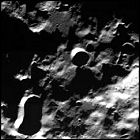 Though its extended mission was cut short by a mishap in 1994, NASA’s ill-fated Clementine lunar orbiter returned data with significant implications for further manned visits to the moon. NASA announces that craters near the north and south poles of Earth’s moon may harbor enough water ice to allow long-term colonization, and could also be used to create propellant on-site. While this promising announcement occurs as the 30th anniversary of the first manned moon landing approaches, any further manned visits exist strictly on paper.
Though its extended mission was cut short by a mishap in 1994, NASA’s ill-fated Clementine lunar orbiter returned data with significant implications for further manned visits to the moon. NASA announces that craters near the north and south poles of Earth’s moon may harbor enough water ice to allow long-term colonization, and could also be used to create propellant on-site. While this promising announcement occurs as the 30th anniversary of the first manned moon landing approaches, any further manned visits exist strictly on paper.
Clementine goes off course
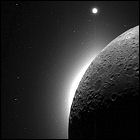 NASA’s Clementine lunar orbiter, its moon mapping mission complete, is directed to fire its engines to put it on a trajectory for asteroid 1620 Geographos, a near-Earth asteroid named for the National Geographic Society (which sponsored a sky survey that led to its discovery). But one of Clementine’s thrusters stays on too long, firing for 11 minutes and revving the vehicle up to an unrecoverable spin of 80 revolutions per minute, exhausting its entire fuel supply in the process. Clementine’s secondary mission to Geographos is abandoned, and its batteries are exhausted a month later.
NASA’s Clementine lunar orbiter, its moon mapping mission complete, is directed to fire its engines to put it on a trajectory for asteroid 1620 Geographos, a near-Earth asteroid named for the National Geographic Society (which sponsored a sky survey that led to its discovery). But one of Clementine’s thrusters stays on too long, firing for 11 minutes and revving the vehicle up to an unrecoverable spin of 80 revolutions per minute, exhausting its entire fuel supply in the process. Clementine’s secondary mission to Geographos is abandoned, and its batteries are exhausted a month later.
Clementine lifts off
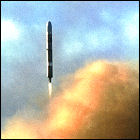 NASA’s Clementine unmanned spacecraft is launched from Vandenberg Air Force Base toward Earth’s moon, the first American spacecraft to aim at that destination since the 1970s. Intended to map the moon with multispectral cameras and obtain a fresh gravity map, Clementine is a huge technological advance over NASA’s last lunar vehicle, featuring a 32-bit image processing system with solid state data storage. Clementine takes a leisurely trajectory to reach its destination, flying by Earth twice before reaching the moon a month after launch.
NASA’s Clementine unmanned spacecraft is launched from Vandenberg Air Force Base toward Earth’s moon, the first American spacecraft to aim at that destination since the 1970s. Intended to map the moon with multispectral cameras and obtain a fresh gravity map, Clementine is a huge technological advance over NASA’s last lunar vehicle, featuring a 32-bit image processing system with solid state data storage. Clementine takes a leisurely trajectory to reach its destination, flying by Earth twice before reaching the moon a month after launch.
Galileo’s last visit home
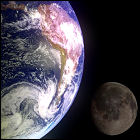 Catching the last gravity assist on its four-year “VEEGA” tour of the inner solar system, NASA/JPL’s Galileo spacecraft swings past Earth one last time, conducting further tests of its imaging system and other instruments by examining Earth and its moon. Galileo now sets its sights on the outer solar system, where it will take up an orbit around giant planet Jupiter in 1995, studing the planet and its atmosphere, its moons, and its unfriendly-to-spacecraft radiation environment. Efforts to release the vehicle’s stuck high-gain antenna continue, though NASA admits that, within a few months, they will have to begin planning for a mission that can only make use of the low-bit-rate medium-gain antenna.
Catching the last gravity assist on its four-year “VEEGA” tour of the inner solar system, NASA/JPL’s Galileo spacecraft swings past Earth one last time, conducting further tests of its imaging system and other instruments by examining Earth and its moon. Galileo now sets its sights on the outer solar system, where it will take up an orbit around giant planet Jupiter in 1995, studing the planet and its atmosphere, its moons, and its unfriendly-to-spacecraft radiation environment. Efforts to release the vehicle’s stuck high-gain antenna continue, though NASA admits that, within a few months, they will have to begin planning for a mission that can only make use of the low-bit-rate medium-gain antenna.
Galileo visits a small blue planet
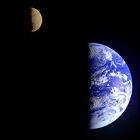 NASA/JPL’s Galileo space probe reaches the second destination on the lengthy “VEEGA” (Venus/Earth/Earth Gravity Assist) flight path that will eventually take it to Jupiter. This leg of Galileo’s journey brings it back to its home planet, Earth, where crystal-clear images of the planet are obtained from the perspective of a passing spacecraft. Galileo will loop past Earth once more at a later date en route to Jupiter.
NASA/JPL’s Galileo space probe reaches the second destination on the lengthy “VEEGA” (Venus/Earth/Earth Gravity Assist) flight path that will eventually take it to Jupiter. This leg of Galileo’s journey brings it back to its home planet, Earth, where crystal-clear images of the planet are obtained from the perspective of a passing spacecraft. Galileo will loop past Earth once more at a later date en route to Jupiter.
Luna 24: the last lunar lander
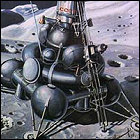 The Soviet Union launches the robotic lunar lander and sample return mission, Luna 24. Touching down safely in the Mare Crisium region two weeks after its launch, Luna 24 drills a two-meter core sample of lunar soil for return to Earth in a small reentry capsule. Luna 24 is the final Soviet mission to the moon, and is the last vehicle from Earth to land on the moon in the 20th century. NASA and the Soviet space agency exchange samples of lunar soil later in 1976, since Luna 24 landed in a region unexplored by the Apollo manned landing missions.
The Soviet Union launches the robotic lunar lander and sample return mission, Luna 24. Touching down safely in the Mare Crisium region two weeks after its launch, Luna 24 drills a two-meter core sample of lunar soil for return to Earth in a small reentry capsule. Luna 24 is the final Soviet mission to the moon, and is the last vehicle from Earth to land on the moon in the 20th century. NASA and the Soviet space agency exchange samples of lunar soil later in 1976, since Luna 24 landed in a region unexplored by the Apollo manned landing missions.
Luna 23
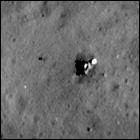 The Soviet Union launches the unmanned space probe Luna 23 toward the moon, intended to gather surface samples from the Mare Imbrium region for return to Earth. The sample collection hardware is unable to complete its task after landing, and ground controllers are only able to receive partial scientific data from the lander, whose batteries run out within three days of landing. It won’t be until 2012, when NASA’s Lunar Reconnaissance Orbiter photographs Luna 23’s landing site from orbit, that the truth will be learned: the lander tipped over on its side during a descent mishap, leaving it intact but unable to gather a soil sample.
The Soviet Union launches the unmanned space probe Luna 23 toward the moon, intended to gather surface samples from the Mare Imbrium region for return to Earth. The sample collection hardware is unable to complete its task after landing, and ground controllers are only able to receive partial scientific data from the lander, whose batteries run out within three days of landing. It won’t be until 2012, when NASA’s Lunar Reconnaissance Orbiter photographs Luna 23’s landing site from orbit, that the truth will be learned: the lander tipped over on its side during a descent mishap, leaving it intact but unable to gather a soil sample.
Luna 22
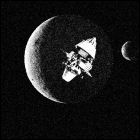 The Soviet Union launches the unmanned space probe Luna 22 toward the moon, the last of the moon-orbiting Luna missions (the remaining vehicles in the series will be attempted landings). Luna 22 remains operational in lunar orbit for 17 months.
The Soviet Union launches the unmanned space probe Luna 22 toward the moon, the last of the moon-orbiting Luna missions (the remaining vehicles in the series will be attempted landings). Luna 22 remains operational in lunar orbit for 17 months.
Luna 21 and Lunokhod 2
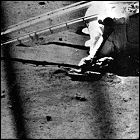 The Soviet Union launches unmanned space probe Luna 21 toward the moon, carrying the Lunokhod 2 robotic rover. Like Lunokhod 1, this rover is solar-powered and can operate independently of its lander, though ground controllers push this vehicle further. Five months into its mission, Lunokhod is driven into a crater from which it is unable to escape; the mission is declared over a month later. This mission is not intended to return lunar soil samples to Earth.
The Soviet Union launches unmanned space probe Luna 21 toward the moon, carrying the Lunokhod 2 robotic rover. Like Lunokhod 1, this rover is solar-powered and can operate independently of its lander, though ground controllers push this vehicle further. Five months into its mission, Lunokhod is driven into a crater from which it is unable to escape; the mission is declared over a month later. This mission is not intended to return lunar soil samples to Earth.
Apollo 17: the last man on the moon
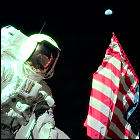 The final manned lunar landing mission lifts off atop a Saturn V rocket. Apollo 17 is the first mission to include a qualified geologist, Harrison Schmitt, in its crew; Gene Cernan and Schmitt descend to the surface aboard the lunar lander Challenger, where the last two men to walk on the moon spend a total of 22 hours exploring the Taurus-Littrow valley. For the third mission in a row, a lunar rover is stowed into one side of the lander. Astronaut Ron Evans orbits overhead in the command/service module America. The astronauts return on December 19th, bringing home nearly 250 pounds of lunar soil and rock samples.
The final manned lunar landing mission lifts off atop a Saturn V rocket. Apollo 17 is the first mission to include a qualified geologist, Harrison Schmitt, in its crew; Gene Cernan and Schmitt descend to the surface aboard the lunar lander Challenger, where the last two men to walk on the moon spend a total of 22 hours exploring the Taurus-Littrow valley. For the third mission in a row, a lunar rover is stowed into one side of the lander. Astronaut Ron Evans orbits overhead in the command/service module America. The astronauts return on December 19th, bringing home nearly 250 pounds of lunar soil and rock samples.
Apollo 16
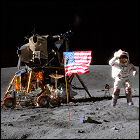 NASA launches the Apollo 16 mission to the moon, lasting 11 days total. Astronauts John Young and Charlie Duke descend to the lunar surface in the lander Orion, while Ken Mattingly pilots the command/service module Casper in orbit. Again, a lunar rover is tucked into one side of the lunar module, allowing Young and Duke to reach distances of 16 miles from their landing site. They spend a total of 20 hours walking on the moon’s surface, collecting over 200 pounds of soil and rock samples from the Descartes highlands region.
NASA launches the Apollo 16 mission to the moon, lasting 11 days total. Astronauts John Young and Charlie Duke descend to the lunar surface in the lander Orion, while Ken Mattingly pilots the command/service module Casper in orbit. Again, a lunar rover is tucked into one side of the lunar module, allowing Young and Duke to reach distances of 16 miles from their landing site. They spend a total of 20 hours walking on the moon’s surface, collecting over 200 pounds of soil and rock samples from the Descartes highlands region.
Luna 20
 The Soviet Union launches unmanned space probe Luna 20 toward the moon, another robotic lunar lander with the capability of gathering a lunar soil sample and returning it to Earth. Over 50 grams of lunar material, including rocky material from the mountainous region near Luna 20’s landing site, are returned to Earth in a shielded re-entry capsule. The lander continues to operate for three days after the sample container is launched back to Earth.
The Soviet Union launches unmanned space probe Luna 20 toward the moon, another robotic lunar lander with the capability of gathering a lunar soil sample and returning it to Earth. Over 50 grams of lunar material, including rocky material from the mountainous region near Luna 20’s landing site, are returned to Earth in a shielded re-entry capsule. The lander continues to operate for three days after the sample container is launched back to Earth.
Luna 19
 The Soviet Union launches unmanned space probe Luna 19 toward the moon, a return to orbital-only missions. Over the course of a year, Luna 19 conducts an extensive mapping campaign of the lunar surface, as well as measuring gravitational anomalies in lunar orbit.
The Soviet Union launches unmanned space probe Luna 19 toward the moon, a return to orbital-only missions. Over the course of a year, Luna 19 conducts an extensive mapping campaign of the lunar surface, as well as measuring gravitational anomalies in lunar orbit.
Luna 18
 The Soviet Union launches unmanned space probe Luna 18 toward the moon, intended to repeat Luna 16’s feat of gathering and returning a sample of lunar soil to Earth. After spending nearly a week in orbit, Luna 18 descends to the surface, but ground controllers have directed it toward a hazardous mountain region, and contact is lost at the moment the vehicle signals contact with the ground – very likely a sign of a crash landing. No further communication is received from Luna 18, nor is the sample container ever sent back to Earth.
The Soviet Union launches unmanned space probe Luna 18 toward the moon, intended to repeat Luna 16’s feat of gathering and returning a sample of lunar soil to Earth. After spending nearly a week in orbit, Luna 18 descends to the surface, but ground controllers have directed it toward a hazardous mountain region, and contact is lost at the moment the vehicle signals contact with the ground – very likely a sign of a crash landing. No further communication is received from Luna 18, nor is the sample container ever sent back to Earth.
Apollo 15
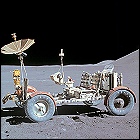 The Apollo 15 mission lifts off, carrying astronauts David Scott, James Irwin and Al Worden on a 12-day mission to the moon and back. Aboard the lunar module Falcon, Scott and Irwin become, respectively, the seventh and eighth men to walk on the moon, exploring the mountainous Hadley Rille region, while Worden pilots the command/service module Endeavour. The service module for this mission is equipped with a suite of sensors and instruments designed to be exposed to space in lunar orbit. Scott and Irwin become the first men to drive on the moon, covering over seven miles in the first lunar rover “moon buggy.”
The Apollo 15 mission lifts off, carrying astronauts David Scott, James Irwin and Al Worden on a 12-day mission to the moon and back. Aboard the lunar module Falcon, Scott and Irwin become, respectively, the seventh and eighth men to walk on the moon, exploring the mountainous Hadley Rille region, while Worden pilots the command/service module Endeavour. The service module for this mission is equipped with a suite of sensors and instruments designed to be exposed to space in lunar orbit. Scott and Irwin become the first men to drive on the moon, covering over seven miles in the first lunar rover “moon buggy.”
Apollo 14: back in business
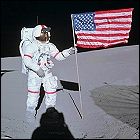 After nearly a year of examining the problems that nearly doomed the crew of Apollo 13, the third lunar landing is achieved by the crew of Apollo 14, commanded by Alan Shepard, the only one of the seven original Mercury astronauts to walk on the moon; lunar module pilot Edgar Mitchell joins him on the surface while Stu Roosa orbits in the command module Kitty Hawk. The Apollo 14 lunar module, Antares, makes the most accurate landing of the Apollo program in the Fra Mauro highlands (the landing site originally assigned to Apollo 13), where soil samples are collected, instruments are deployed, and Shepard becomes the first human being to hit a golf ball on the moon.
After nearly a year of examining the problems that nearly doomed the crew of Apollo 13, the third lunar landing is achieved by the crew of Apollo 14, commanded by Alan Shepard, the only one of the seven original Mercury astronauts to walk on the moon; lunar module pilot Edgar Mitchell joins him on the surface while Stu Roosa orbits in the command module Kitty Hawk. The Apollo 14 lunar module, Antares, makes the most accurate landing of the Apollo program in the Fra Mauro highlands (the landing site originally assigned to Apollo 13), where soil samples are collected, instruments are deployed, and Shepard becomes the first human being to hit a golf ball on the moon.